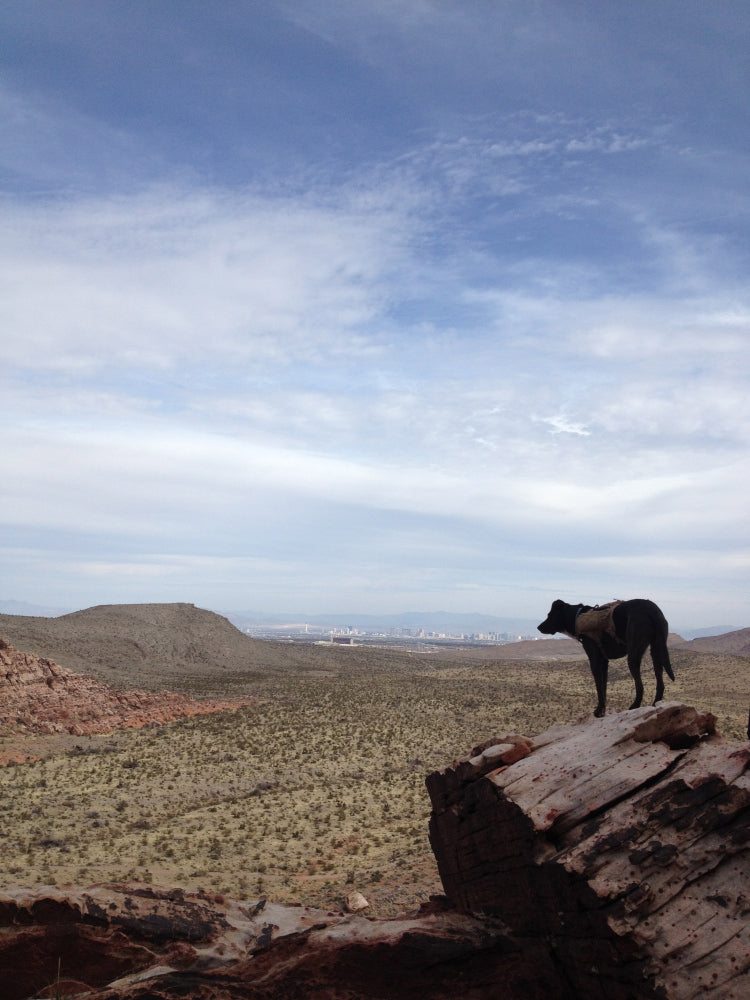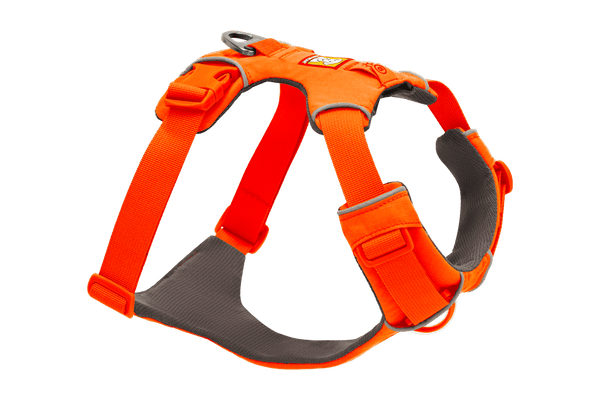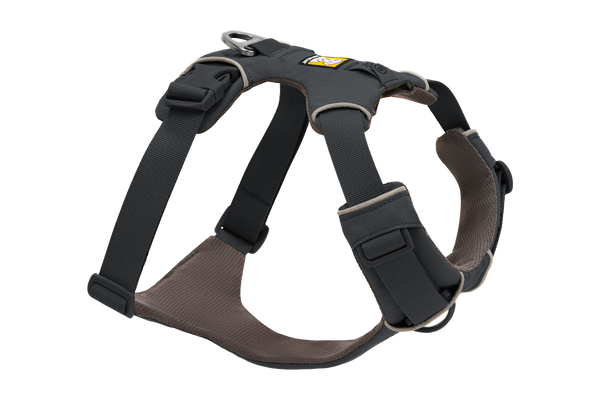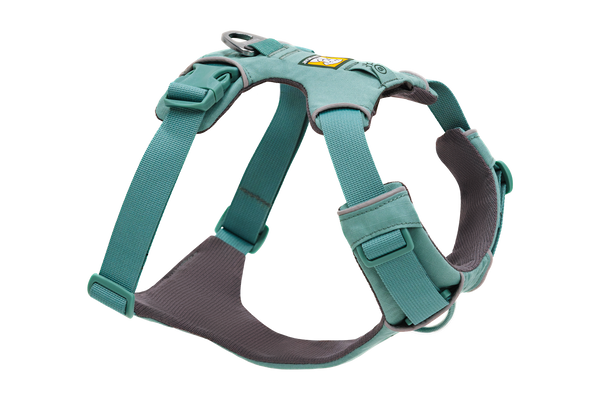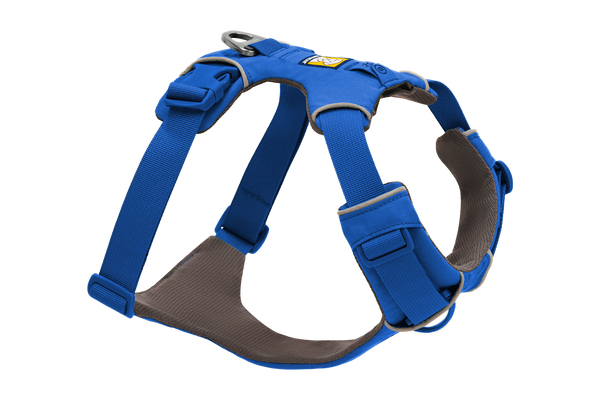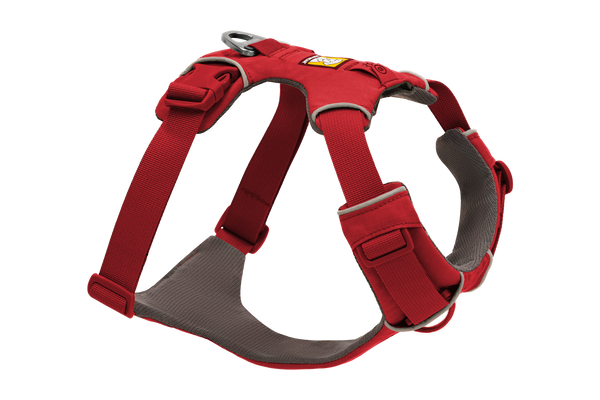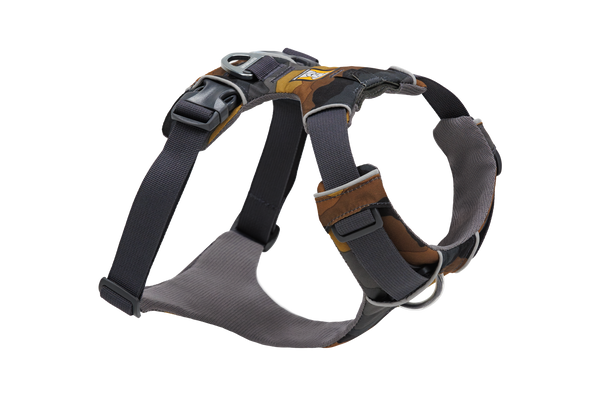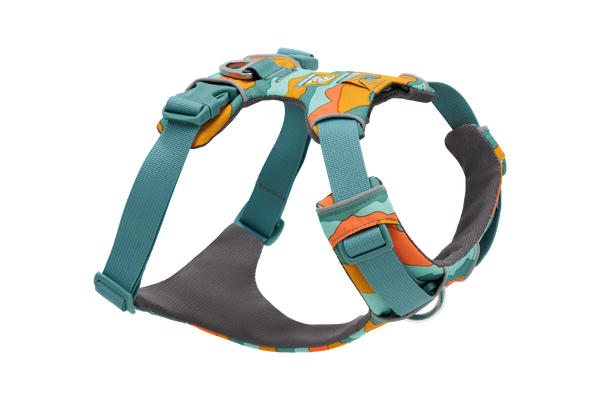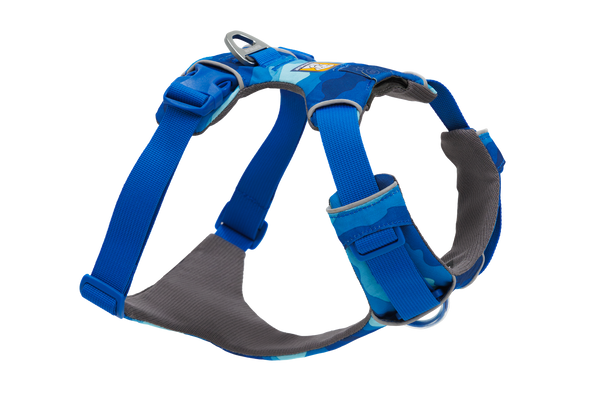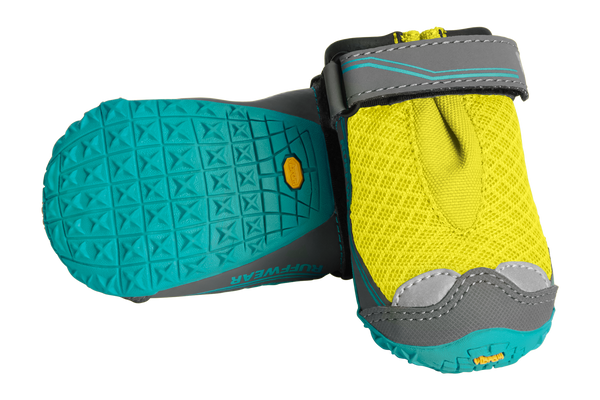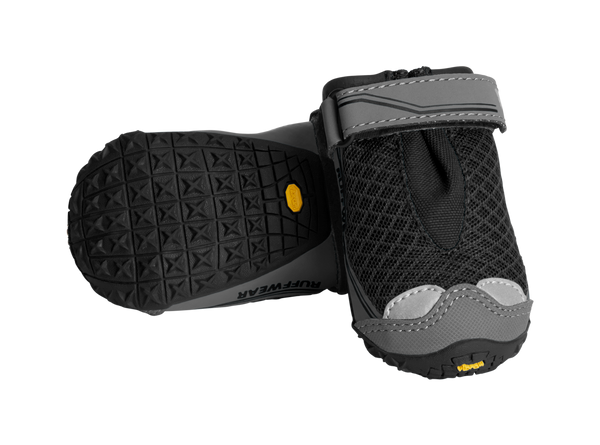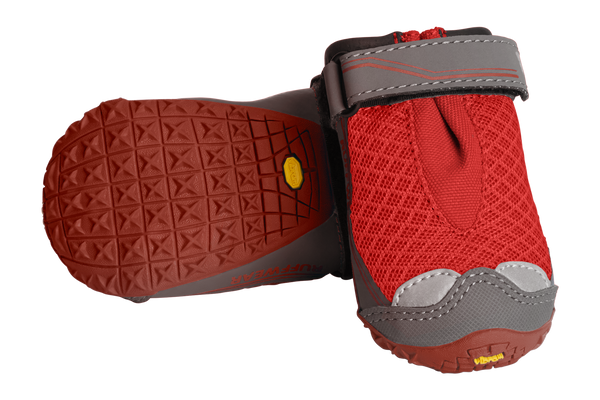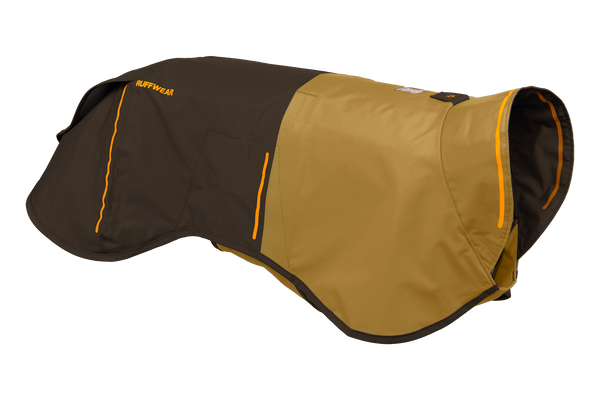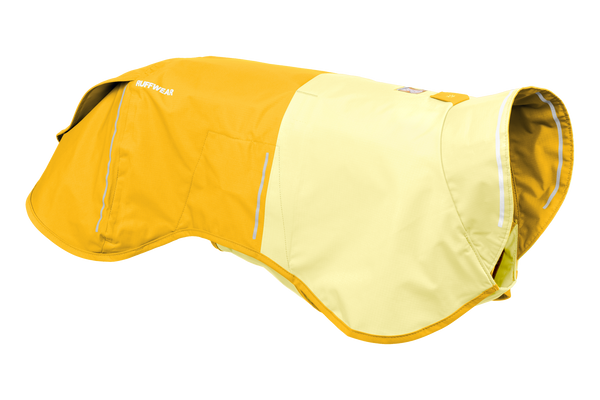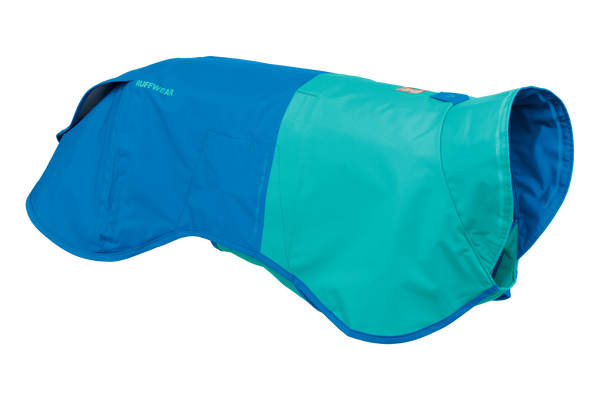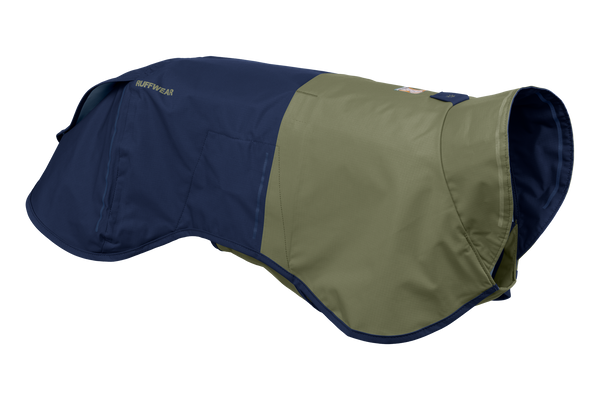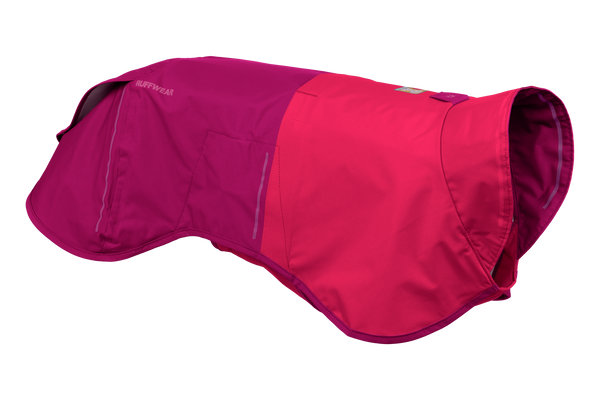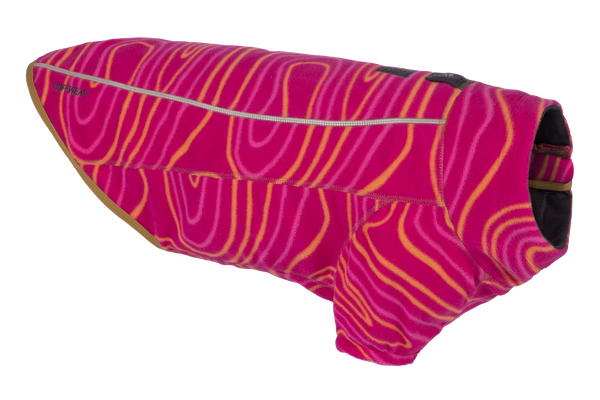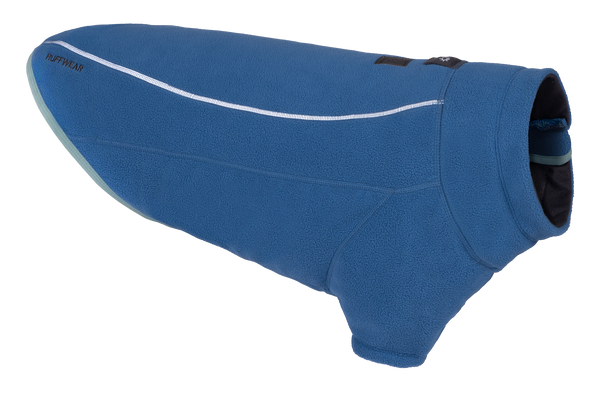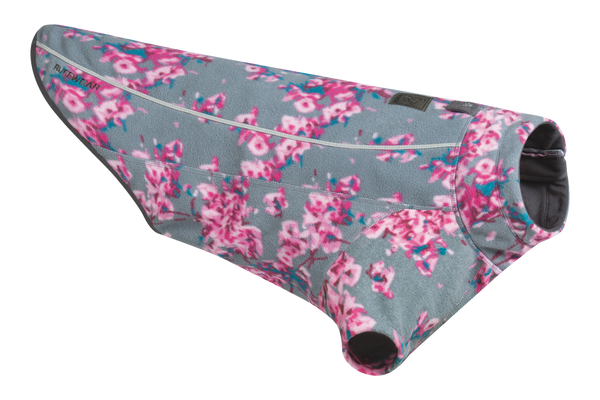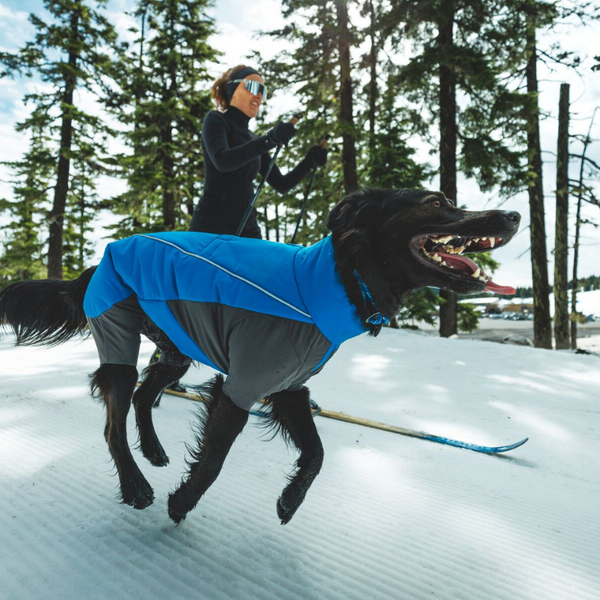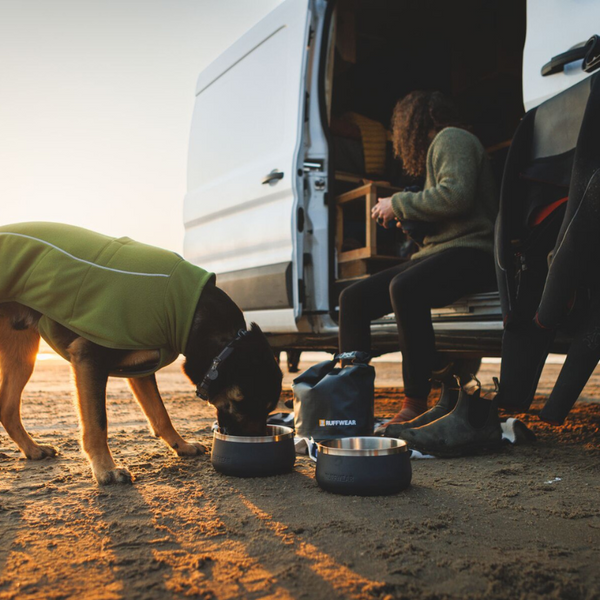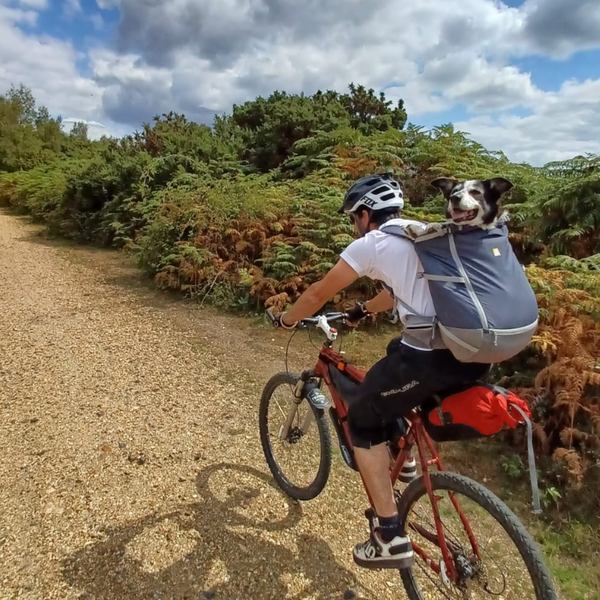My Dog is My Co-Pilot: Tips for Van Life with Furry Friends
Life is better with dogs. So why leave them behind when you’re hitting the road? With the increasing popularity of van and car living to maximize outdoor playtime, lots of people have asked me how to live with dogs on the road. Whether you’re currently living in a vehicle and contemplating adoption, thinking about moving into a vehicle and wanting to bring your pup, or just looking to do an extended road trip with your best bud, here are some answers to my most frequently asked questions and tips for life on the road with dogs!
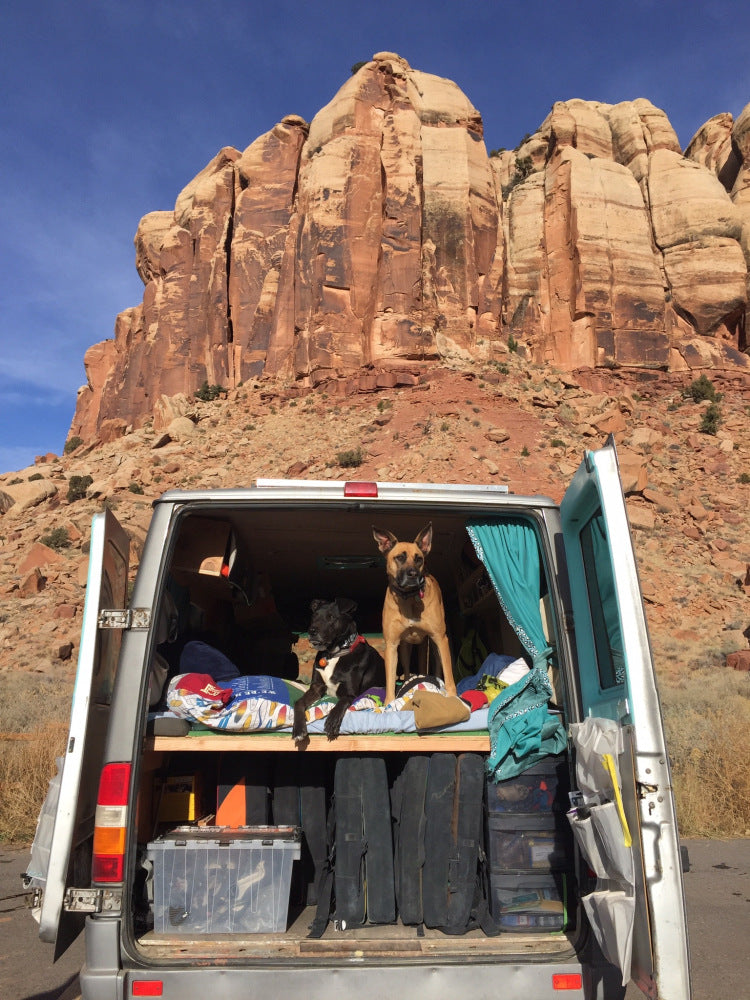
Photos Contributed by Laura Patton of @mobileroamers
Frequently Asked Questions
What do the dogs do while you’re at work (or out to dinner, getting groceries, at the ski resort, or somewhere where they aren’t allowed, etc.)?
This is the question I get asked the most! For us, the van is home. We live in it full-time, year round, and as such Titan and Star feel comfortable hanging out in there just like they would a regular house. We are able to control the temperature using sunshades and our roof fan (and by not living in hot climates) and blankets and jackets in the winter, so if they have to hang out for a bit they don’t mind. If you’re traveling in a hotter climate, you’ll probably need a built in A/C unit that can run while the vehicle is off. This past summer while we were working full time, we were able to rent a small piece of land and build a little fence around the van so they could hop in and out at their leisure. Titan and Star do almost everything with us, but if they are going to be hanging out at “home” they get lots of exercise before and after.
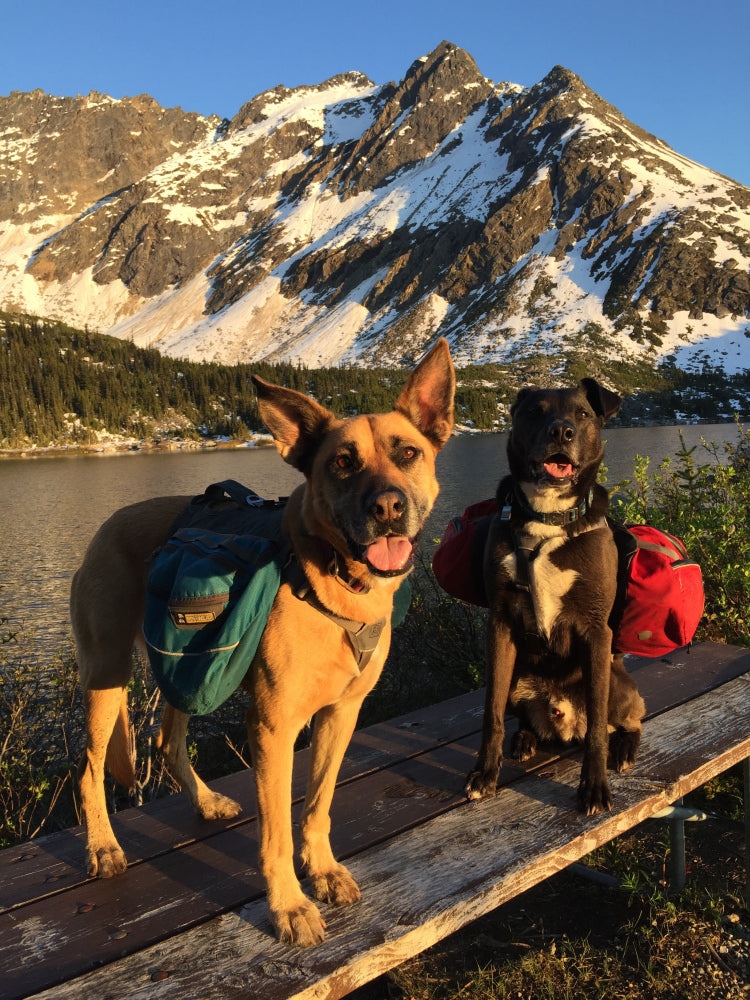
What if you want to visit a National Park?
Dogs are limited to developed areas in National Parks, which usually includes campgrounds, parking lots, and picnic areas. This excludes them from trails and the backcountry. Fortunately, many of the NPs are bordered by BLM or Forest Service land which have limited or no stipulations against dogs and can give you similar terrain to the park itself. Some parks do have differing rules based on the season. For example, some park roads that become snow covered and closed to traffic in winter are open to humans and dogs for cross country skiing during that time since the road is technically a developed area. In addition, you can look for National Monuments and State Parks as dogs are often allowed there. If you’re traveling in Canada, dogs are allowed in Provincial Parks (Canadian version of National Parks) as long as they are on a leash.

How do you handle living in a small space with large dogs? Where do they sleep?
Titan and Star are pretty large – they weigh in at 75 and 60 pounds respectively. Our small space works for us because when you’re on the road or living in a van, you’re spending a lot more time with your dog than you would in a more “normal” situation, which helps your dog adapt to your lifestyle, get used to your habits, and find his or her space in the van. Plus, you’ll be spending lots of time outside exploring and adventuring in the wide open space. All the exercise helps tucker your pup out, which leaves them calmer in the van. As for sleeping, you’ll find Titan and Star sprawled out on the bed while their humans are squashed in the corner.
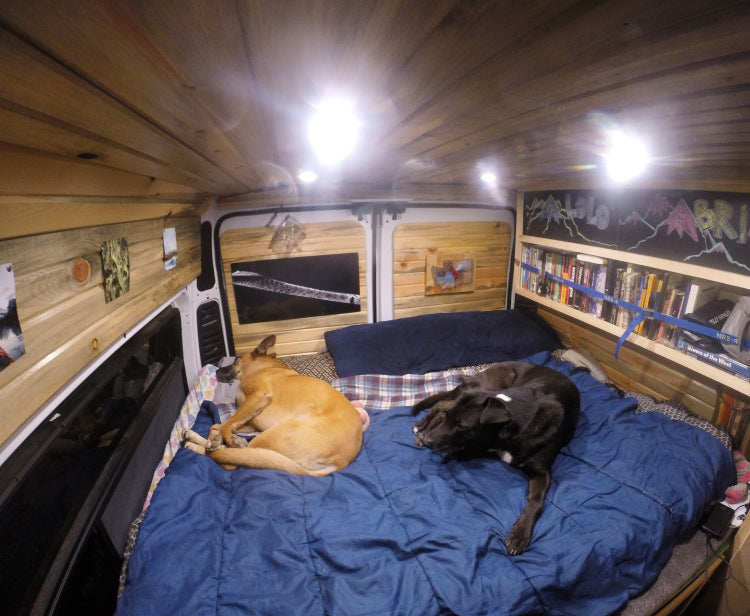
How do you handle keeping the van clean, dry, and mud free?
Make sure you have a designated dog towel and if your dog sleeps on the bed, a dog blanket. We cover our bed with an old unzipped sleeping bag so even if they dogs come in wet or dirty they aren’t getting our bedding wet. A little bit of mud and dog hair is a guarantee, but if you wait until things dry out a bit, it all sweeps right out the door, no problem!

What about the vet?
We have vets we like in a few key places that we visit every year. This allows us to have the dogs’ annual exams with vets we know. For unexpected trips to the vet, make sure you are always carrying your dog’s vaccination records and ask around- local pet owners are generally very helpful in giving out vet recommendations in the area.
Tips
- Be flexible. Things don’t always go as planned, and being able to go with the flow will save you lots of stress. Wake up for a big hike and your pooch is pooped? Go with your back-up plan of having a relaxing day of reorganizing the vehicle or grabbing groceries.
- Have a large water receptacle in your vehicle. Sometimes water filling options are few and far between. Having a big container (we keep 7 gallons in the van) and filling it up at every opportunity ensures that your dog won’t ever be without the essential fresh bowl of water.
- Teach important road trip commands like ‘go potty’ and ‘load up.’ If your dog is shy about using the bathroom in new places, be sure to brush up on their ‘go potty’ command before hitting the road. The command ‘load up’ is crucial for us – the dogs know to stop whatever it is that they’re doing and hop on in.
- Stay active! Remember that a tired dog is a good dog and the more exercise and activity your dog gets, the more content they will be when it’s time to curl up for sleep in the truck bed at night. Plus, getting out and exploring new places is a great reason to get on the road in the first place!
Do you have additional questions or ideas to share? Leave a comment below or connect with Laura on Instagram @mobileroamers.
